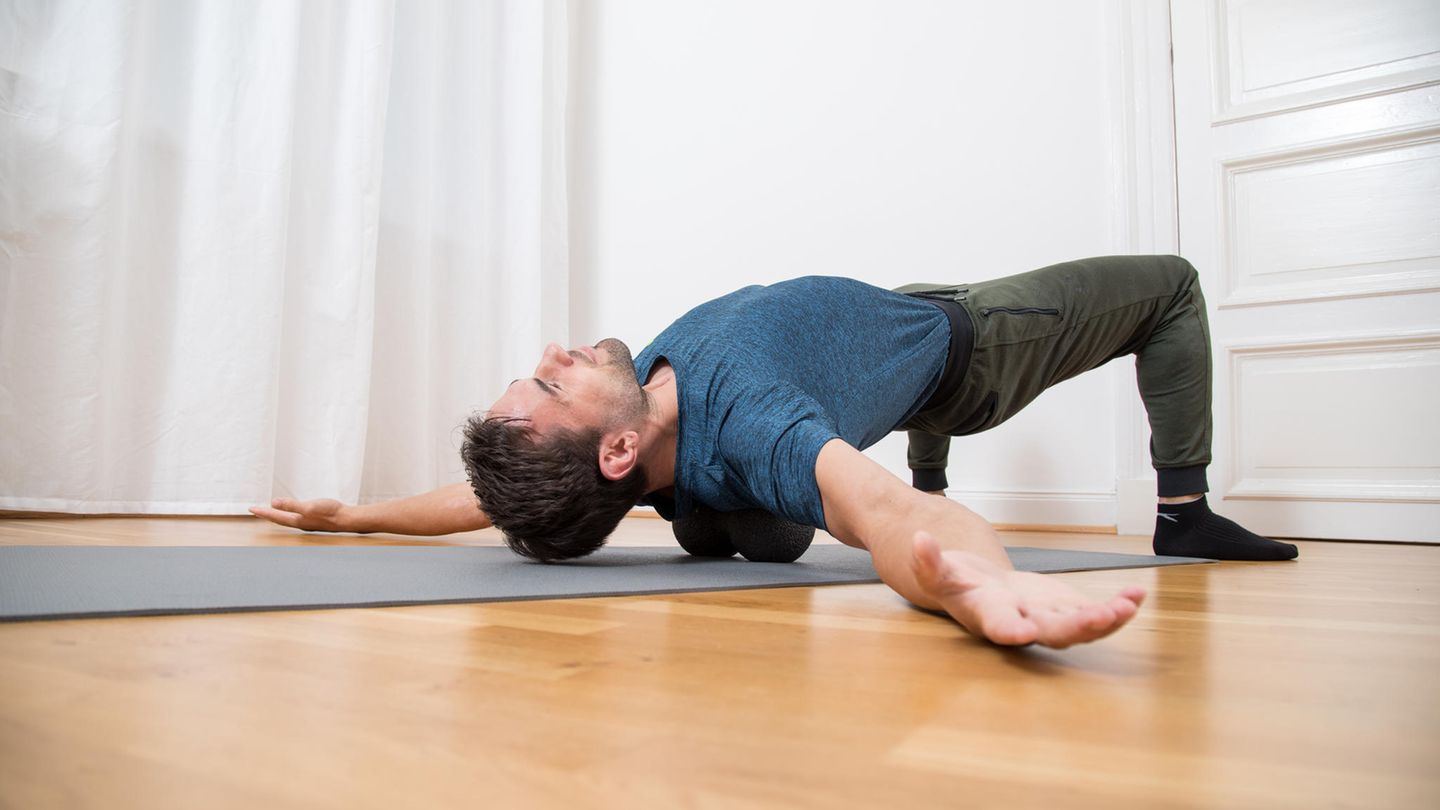Pain, let go!
Triggerpunkt massage: tools that help the muscles with relaxation
Trigger points are nasty and painful. But not invincible. What the pain points in our muscles are all about and which tools you can use to lend a hand.
Do you appreciate how many muscles do the day, day out in each of us (at least partially) hard work …? There are more than 500. And in almost everyone of them, from the shoulder to the calves, so -called trigger points can occur. They are superfluous like a goiter, but can be really painful. Millions of Germans struggle with it every day. As a rule, physiotherapists take on the pain that occurs often in the shoulder and neck area, but also in the back and piriformis (muscle on the inside of the pelvis under the buttocks). Do you want to save yourself the way to the doctor or in a physiotherapy practice?
In the following article we provide basic knowledge on the subject of trigger points and trigger point massage. An experienced physiotherapist reveals which trigger points you can treat at home, what to look for and which tools can help with do-it-yourself pain therapy.
What are trigger points?
Trigger points are painful hardening in the muscles, in tendons, ligaments, on the bone skin or in the connective tissue that can radiate into other body regions. Physiotherapists and doctors speak in the most common trigger points in the muscles of myofascial trigger points or myogelosis. A distinction is made between trigger points that cause pain during sports, but also at rest and those that only hurt when pressure on the appropriate place.
In trigger points that originate in sports or the often one-sided physical stress, for example in the home office, there is a permanent ability to prevent movement and blood circulation in a muscle proportion. The result: the muscle cannot relax on its own. And the pain points are already there. Discited sore muscles or another muscle injury can also be the cause of trigger points. And precisely when the connective tissue, muscle strands and muscle fibers wraps (the fascia), loses its mobility through structural changes. One more reason, fascia that may be glued after training with one To “spoil”.
How are trigger points treated?
The most common therapy for trigger points is the trigger point massage. There is a fairly simple idea behind it. To relieve the causal muscles for the pain so that they relax. This is achieved either by pressure on the pain point, by pressure in the longitudinal direction of the muscle or by pressure across the muscle course. You don’t necessarily need professional support for this. Trigger points can also be treated yourself, says Kristina Jago, physiotherapist and Master of Science Clinical Sports Physiology and Sports Therapy. However, this does not apply to every region of the body. “If the problem is between the shoulder blades, for example, it will be rather difficult without help,” says Jago.
And here the question arises directly:
How do you actually find the trigger points?
Kristina Jago: “From my experience as a physiotherapist, I can say that people with a good body feeling usually know very well where a muscle is tensioning. My Tip for everyone else: Cut out three small points from colored adhesive tape and glue them to the places where you can feel the greatest pain. You will notice that you think differently about the pain than when you talk to you that your shoulder or butt hurts. Important: This trick only works for painful muscle points, not with other sports injuries. If you can feel hardening in the muscle at the glued pain points, you have found the pain point. If the pressure on the pain point does not bring any relief, you can also score the muscle lengthways to find the pain on pain. “
A tool that has been used in physiotherapy for trigger point massages for many years is the trigger point rod. The device has now been revised and is very suitable for treating trigger points in the area of the shoulder blade, the spine or the calf itself. The functionality is based on a simple lever principle. The rod is applied to the shoulder blade. Then build up the pressure that is supposed to reach the trigger point with your hand or the elbow in front of the chest. According to the manufacturer, other trigger points can also be treated with the massage tab, for example on the foot. The tool is equipped with several massage sauces and is intended to understand a thumb and elbow massage.
A tool that Kristina Jago recommends primarily for the treatment of trigger points in the back muscles, the shoulder or under the foot. “These hats are particularly efficient if you lie down on it with your upper back and make small nicking movements with your head or moved back and forth. This exercise is also pleasant with a hat on each side. Try it out in bed for the beginning or put a towel between the hat and back. This is much more pleasant than directly on the gymnastics mat.
With the simple rods made of wood or plastic, self-treatment away from the upper neck muscles and the calf and arm muscles are rather difficult. Jago therefore recommends looking for a partner who treats the trigger points in the back muscles, for example in the upper area between the shoulder blade and spine. At the same time, the “patient” levels up and down with one arm. “This is how the muscle is moving, is alternately tense and relaxed and at the same time the pressure of the rod causes a slight cross -stretch of the muscle,” explains the physiotherapist. With the chopstick you can also stretch the muscle across, i.e. from the course. Jago recommends the wood variant. “Wood is warmer and grabs better.” It is important that the rods can be disinfected well.
A classic that is primarily known from the field of fascia training. But even with the small balls made of cork, which are available in different sizes, you can massage trigger points. Here, too, the combination of targeted pressure and the rolling movement, which stretches the muscle in the longitudinal and transverse direction, has a relaxing effect on painful hardening. Only in the area of the shoulder blades does it become tricky without help. The problem: If you stand with the massage ball in the back on the wall, it is difficult to control and hold the correct position in the movement.
Trigger point massage vs. fasc.
Trigger point massage and fascin therapy differ significantly from each other in two points. It is crucial that trigger point massages alone aim to relax the muscles and dissolve the pain points. Basically, it’s about actively let go of the muscles. On the other hand, you can and may well sweat during fascia training. With the therapy with the roles and balls, you usually have to become active yourself. In addition, with fascia rollers you can achieve a significantly better longitudinal stretch of muscle strands than with the selective trigger point tools. The cross -stretch of the muscles with the roles is almost impossible.
*This article contains so-called affiliate links to products in online shops. If a user clicks on it and buys something, the publisher receives a commission from the dealer, not from the manufacturer. Of course, where and when you buy a product is up to you.
Source: Stern
I am Pierce Boyd, a driven and ambitious professional working in the news industry. I have been writing for 24 Hours Worlds for over five years, specializing in sports section coverage. During my tenure at the publication, I have built an impressive portfolio of articles that has earned me a reputation as an experienced journalist and content creator.




